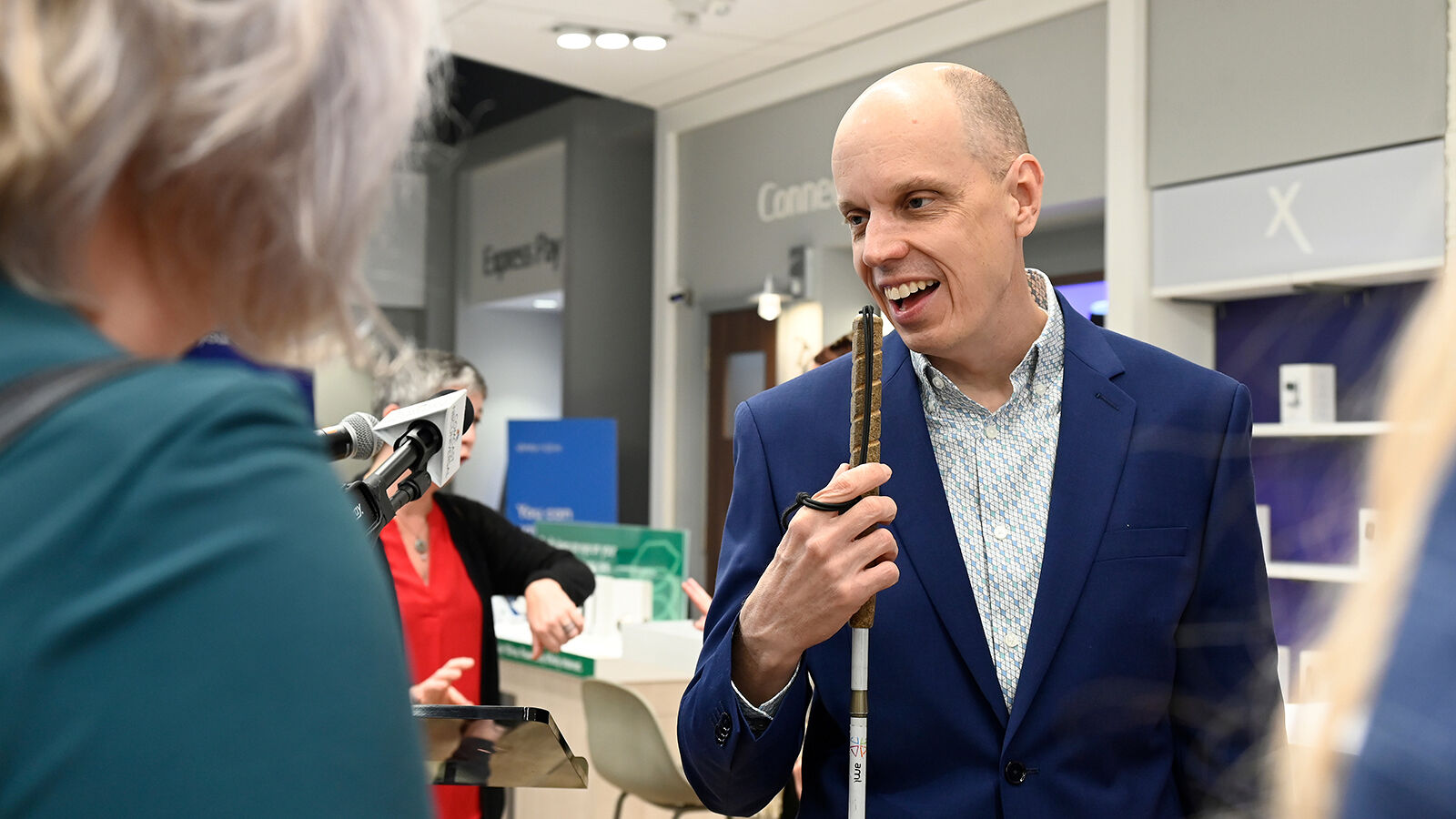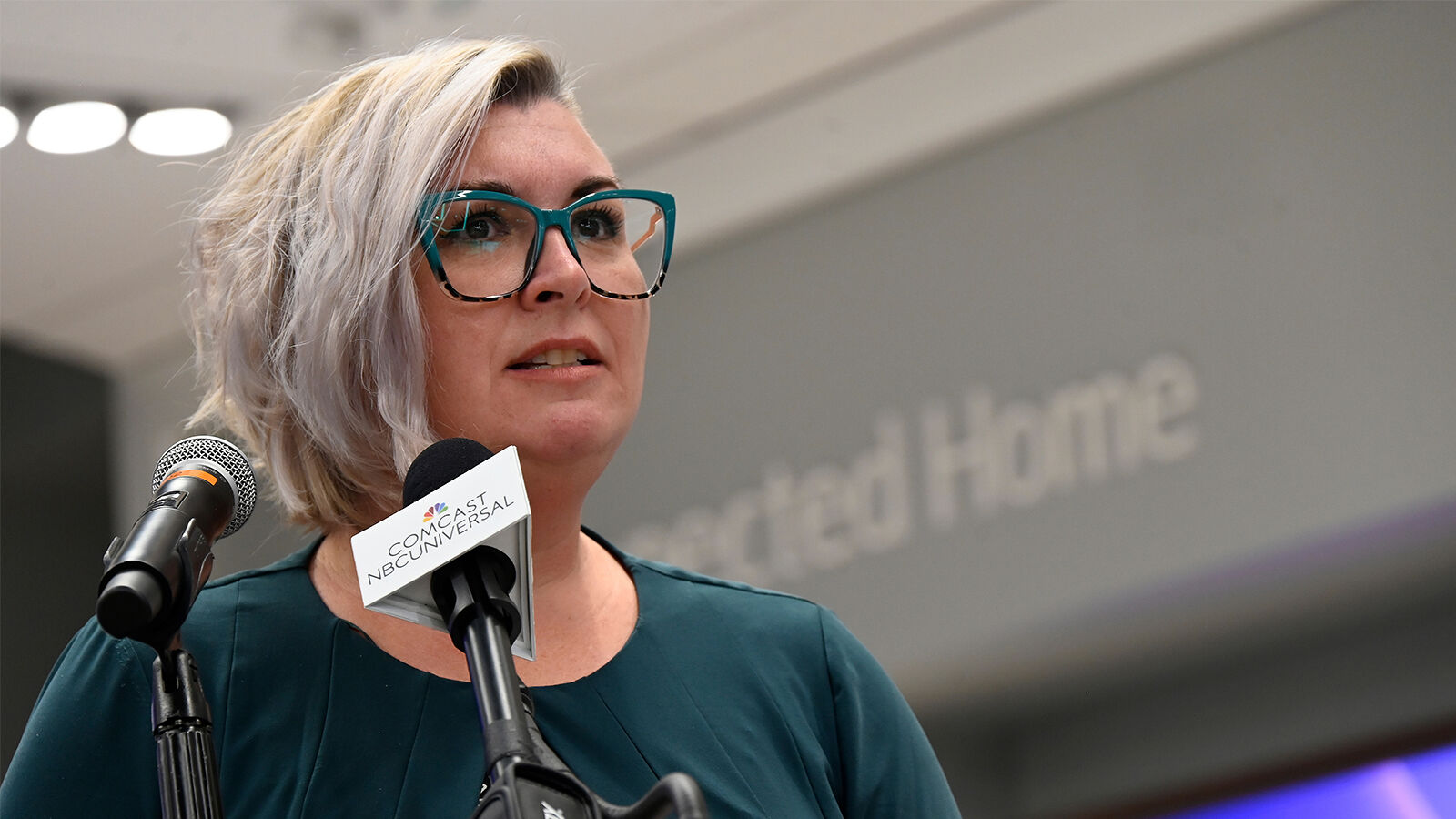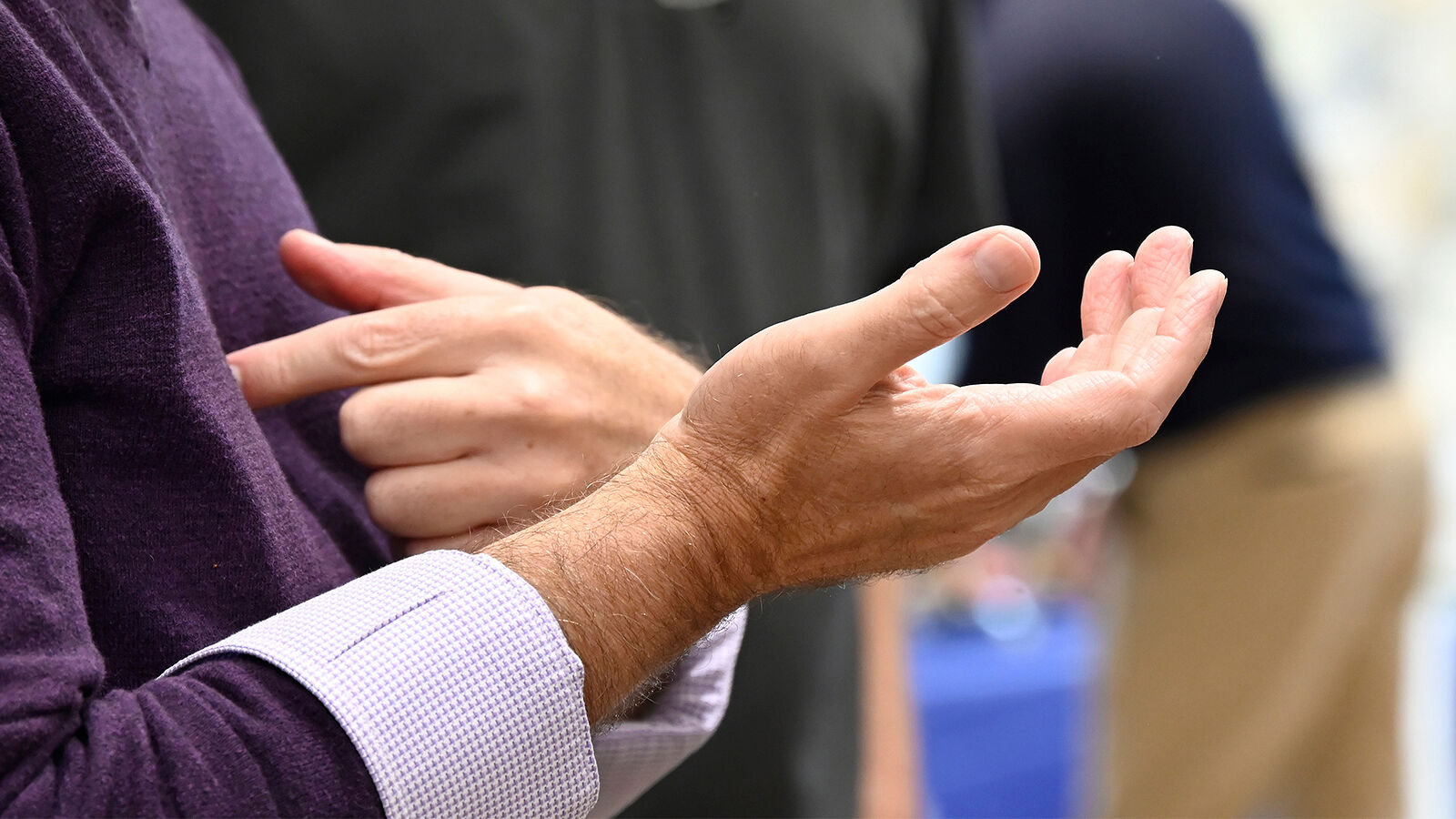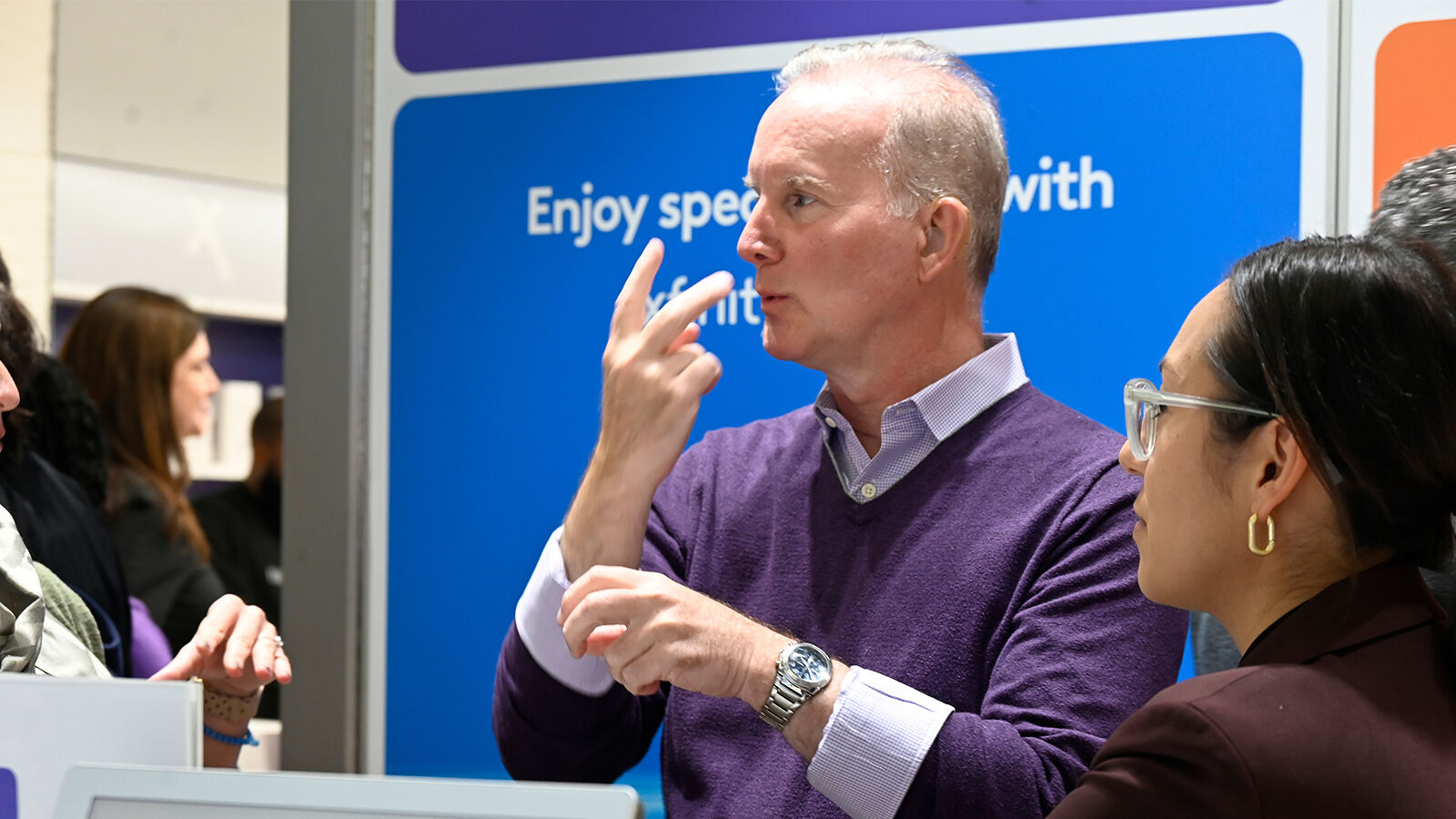Accessibility
Setting a New Bar for Accessibility in Our Retail Customer Experience
As Vice President of Accessibility at Comcast, it’s my top priority to ensure that customers of all abilities can access and enjoy our services, from fast and reliable Internet connections to the vast entertainment ecosystem that we offer.
Recently, I participated in the launch of our first ever American Sign Language (ASL) virtual remote interpreting (VRI) service pilot in Philadelphia. Through our partnership with Communication Service for the Deaf, anyone who communicates through ASL can go into one of our participating Xfinity retail stores and request a live ASL interpreter via video. That interpreter facilitates the communication between the customer and the store associate, making their experience efficient, more enjoyable, and less stressful.

Tom Wlodkowski, Comcast VP of Accessibility, speaks with guests at the Philadelphia ASL VRI launch event held at the City Avenue Xfinity store.

Rosa Lee Timm, President of the Social Venture Fund for Communication Service for the Deaf, delivers remarks at the Philadelphia ASL VRI launch event.

Amy Nieves, Executive Director, Mayor’s Office for People with Disabilities and Mayor’s Commission on People with Disabilities, delivers remarks at the Philadelphia ASL VRI launch event.

A participant signs in ASL in conversation with other guests.

Bob Shilling, of Pennsylvania School for the Deaf, converses with participants at the Philadelphia ASL VRI launch event.
During a demo with Alycia Brown, an Xfinity customer who is Deaf, we had the opportunity to see this service in action. After connecting with one of the ASL NOW interpreters, Alycia was able to easily ask our store manager, Shaun Wilson, what her balance was, and when it was due.
Comcast is the first retailer in our industry to offer this service to customers, and we are proud to create a more inclusive retail environment for customers who utilize ASL communication. Beyond that, we are also excited to launch the pilot in our hometown, bringing it to six stores in the greater Philadelphia region; as well as to select stores in St. Augustine, FL, San Jose, CA, and Frederick, MD.
At Comcast, we are dedicated to connecting our customers wherever they are. Each and every day, my team and I work to ensure our commitment extends to customers with disabilities, by driving broad usability of our products and services. An estimated 42 million Americans have a disability, according to the 2021 American Community Survey (ACS), a number that will continue to increase as the population ages. When products and experiences are designed to be more inclusive of people with disabilities, they are better for everyone.
This ASL interpretation pilot embodies that mission and lays the foundation for advancements in inclusion of Deaf or hard of hearing people in retail spaces across the country. The 2021 ACS also estimates that 3.6% of the U.S. population is “Deaf or have serious difficulty hearing.” So while we are offering the live ASL interpreting service now at a pilot scale, we have plans to expand availability to more stores in the future.
But we cannot do this alone — as Rosa Lee Timm, President of the Social Venture Fund for CSD, shared at the in-store launch, “Accessibility is possible through partnership.” Our collaboration with CSD started in 2019, when we established Comcast’s ASL NOW call center to offer our Deaf and hard of hearing customers dedicated customer service in ASL. Our in-store VRI service builds on that work, making it easier for our Deaf or hard of hearing customers to navigate anything from understanding their bill, to updating their connectivity service, or signing up for a new mobile plan.
Similarly, Amy Nieves, Executive Director of the Philadelphia Mayor’s Office for People with Disabilities, said, “It really is all of our responsibility to ensure equitable access in all areas of public life, especially as it relates to information and communication.”
We agree, and it’s a responsibility we take seriously. As the country’s largest broadband provider, we’ve invested in closing the digital divide for more than a decade. Through Project UP, we are now investing $1 billion to connect people to the Internet by facilitating adoption, accessing a device, and building digital skills.
In Philadelphia, we’ve been able to work with our local partners to receive feedback about our new service and broaden our reach within the Deaf and hard of hearing community to promote digital equity. Working with our longtime partner, the Pennsylvania School for the Deaf (PSD), we were able to step up our digital inclusion efforts through a $25,000 grant for digital skills building for students who are interested in pursuing a career in technology.
Indeed, accessibility needs to be addressed from every angle to have a sustainable impact. When product design and customer experience are met with program investments, we move closer to achieving true digital equity. As we approach 2024, let’s reaffirm our commitment to a more inclusive society through partnerships, dedication, and innovation.
Tom Wlodkowski is Vice President of Accessibility.
